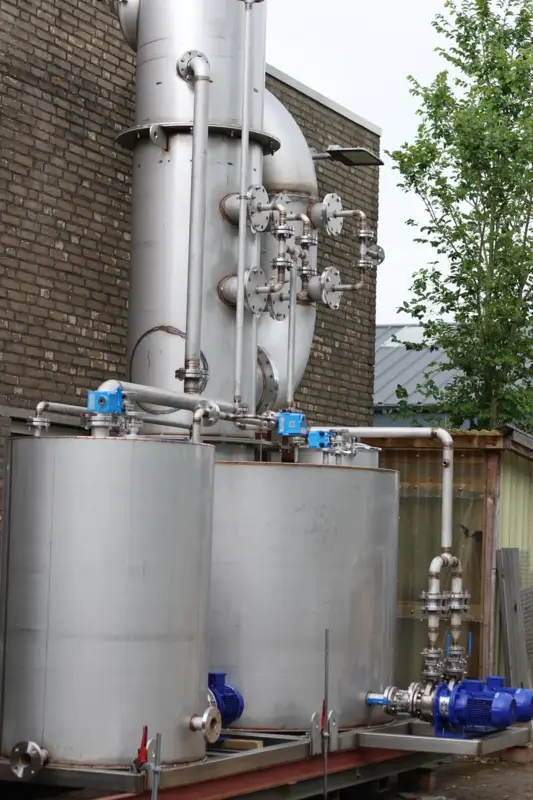From Fumes to Fuel: How Wet Gas Scrubbers Turn Ammonia into Clean Energy
Green vs. Blue Ammonia:
 Ammonia fuels are categorized into two types: green ammonia and blue ammonia. Green ammonia is generated through electrolysis that utilizes renewable energy sources, while blue ammonia is derived from the byproducts of fossil fuel production. As a potential zero-carbon fuel, ammonia presents significant opportunities; however, substantial investments in production capacity and emissions reduction are necessary. The effective removal of ammonia from gas streams can be achieved using wet gas scrubbers, which operate on the principle of mass transfer to reduce ammonia levels in industrial gas.
Ammonia fuels are categorized into two types: green ammonia and blue ammonia. Green ammonia is generated through electrolysis that utilizes renewable energy sources, while blue ammonia is derived from the byproducts of fossil fuel production. As a potential zero-carbon fuel, ammonia presents significant opportunities; however, substantial investments in production capacity and emissions reduction are necessary. The effective removal of ammonia from gas streams can be achieved using wet gas scrubbers, which operate on the principle of mass transfer to reduce ammonia levels in industrial gas.
The Role of Mass Transfer in Wet Gas Scrubbers
The mass transfer between divergent phases, specifically the integration of liquid and gas in a wet gas scrubber, is a critical factor influencing the scrubber's efficiency. Effective separation cannot occur without interaction between the washing liquid and the waste gas containing contaminants. Generally, it can be concluded that an increased contact surface area enhances the absorption process. Additionally, the duration of contact is also a crucial element. It is evident that proper integration cannot occur if the residence time of the gas within the integration phase is insufficient.
Custom Scrubber Design by Ravebo
Ravebo’s bespoke scrubbers exhibit variations in their capabilities for mass transfer and fraction separation. The configuration and design of these scrubbers require meticulous attention, with several critical factors to be considered: the necessary and available absorption related to the contact surface, the pressure drop, the desired removal efficiency, and ultimately, the reliability of the system. The efficiency of absorption is dependent on the available contact surface area for phase exchange. Typically, Ravebo can design both open-spray system scrubbers and packed bed scrubbers to achieve any specified removal efficiency.
With this technology Ravebo contributes to a sustainable future where ammonia forms a green energy source as replacement for fossil fuels thereby reducing reliance on costly and resource-intensive metal-consuming batteries.
